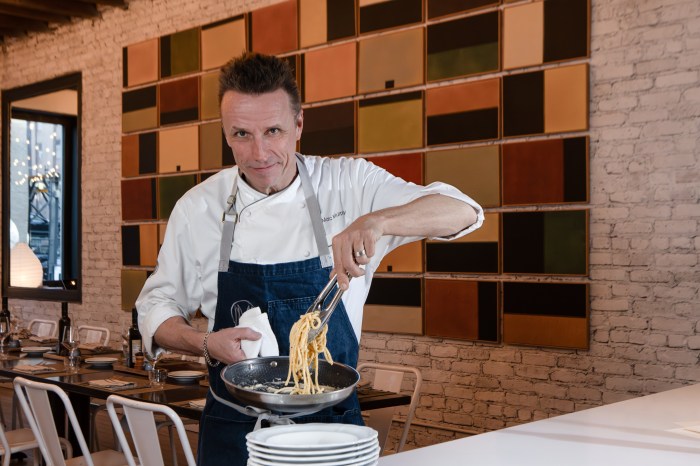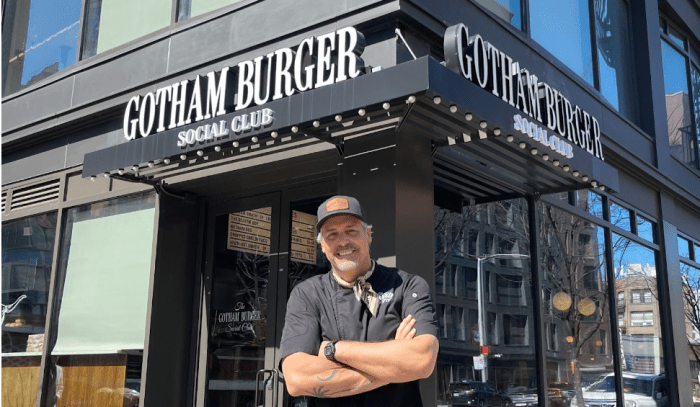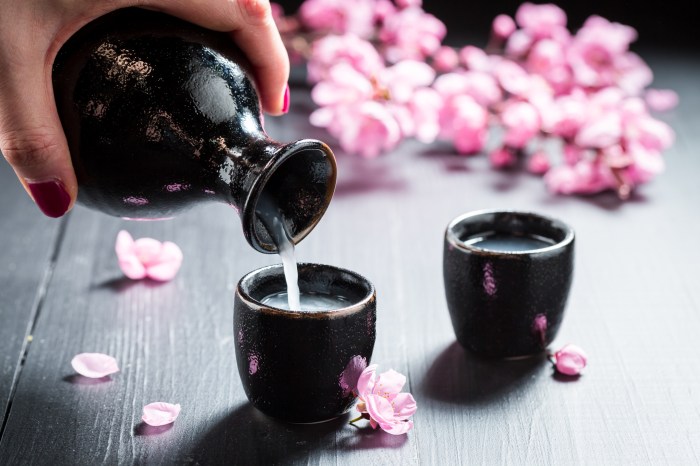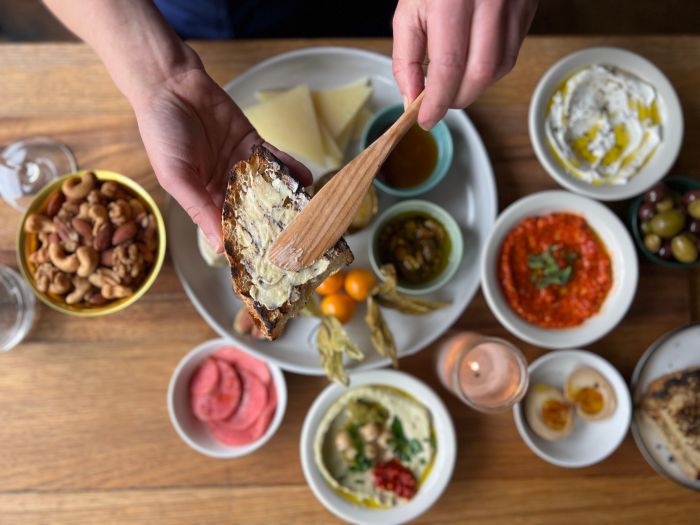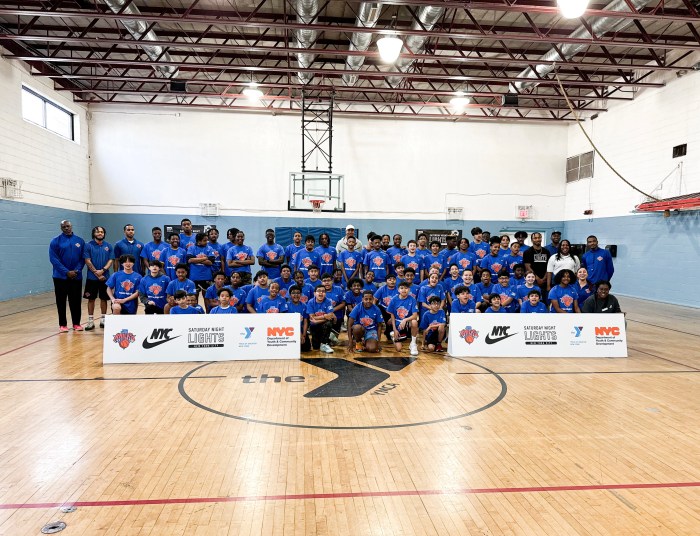David Arnold turns the spigot on the enormous tank of liquid nitrogen that sits at the entrance of Booker and Dax. He is immediately engulfed in a vapor cloud, as if he had stepped over a steaming manhole cover on a city street. The tank hisses and sputters angrily as he fills his pitcher.
He will use the liquid nitrogen to chill the inside of a glass by adding a small measure of the liquified gas and swirling it around, before dumping it unceremoniously onto the bar. The liquid quickly disappears in another vapor cloud; but it has done its job — the glass is perfectly chilled.
Next, the cocktail scientist will pour in a pre-made cocktail called Gin and Juice, which is made by spinning grapefruit juice in a centrifuge until it is almost clear before adding Tanqueray, chilling it with even more liquid nitrogen and carbonating the concoction.
At the other end of the bar Tristan Wiley sticks a 1500° poker into a glass of liquid, causing flames to shoot up two feet in the air. More hissing and sputtering ensues as the alcohol burns off and the sugars caramelize. The drink — dubbed the French Colombian — is a mix of Pernod, cinnamon, brown sugar and lemon but the scorching has transformed the flavors and rendered it piping hot in the process.
Another cocktail called the mustachi-ode is made from a pistachio syrup that has been made using a centrifuge and comes laced with bourbon and Becherovka, an herbal bitter from the Czech republic. The cocktail gets its name from the artful moustache that the bartender paints into the froth on top of the drink with Angostura bitters.
These techniques — taking classic cocktails and reimagining them or inventing completely new creations not previously technologically possible — is commonly referred to as “molecular mixology.” The term is derived from, and indeed inspired by, “molecular gastronomy” — the modern culinary movement that uses science and contemporary technology as its foundation.
For his part, Arnold bristles at the term, finding it pretentious and short sighted. He looks at what he is doing as simply a continuation of the art of bartending, which has always been implicitly aware of chemical interactions. The layering of liquids with different viscosities being the most obvious example. Indeed, liquid nitrogen was first mentioned in cookbooks in the 1890’s and he claims that his hot poker references pre-civil war techniques.
Arnold doesn’t feel that he is changing the essential character of the time honored classics, rather he is improving the way they are made. His take on a Manhattan, for example, involves pre-blending the cocktail, storing it in a bottle in the freezer before serving it in a glass chilled with liquid nitrogen. The flavor of a classic Manhattan is there but it stays colder longer and does not get diluted by melting ice.
While this new cocktail movement is still in its infancy, it is growing in popularity. Arnold attributes the success of Booker and Dax (the bar, located in the back of Momofuku Ssäm Bar) just celebrated their one year anniversary) both to the fact that there are not too many places serving these types of cocktails but more importantly to their friendly service and delicious drinks. People may like to watch flames and liquid nitrogen clouds, but they won’t keep coming back if the drinks don’t taste good.
He may, however, have a hard time shaking the molecular mixology term, especially because his former day job was as Director of Culinary Technology at the International Culinary Center. What Arnold is really trying to do is rationalize the way bartenders work behind the bar, by using more effective techniques and the latest technologies. The result for the customer should always be a delicious cocktail. Of course, a sideshow of a little fire and ice can’t hurt, unless you get too close!










